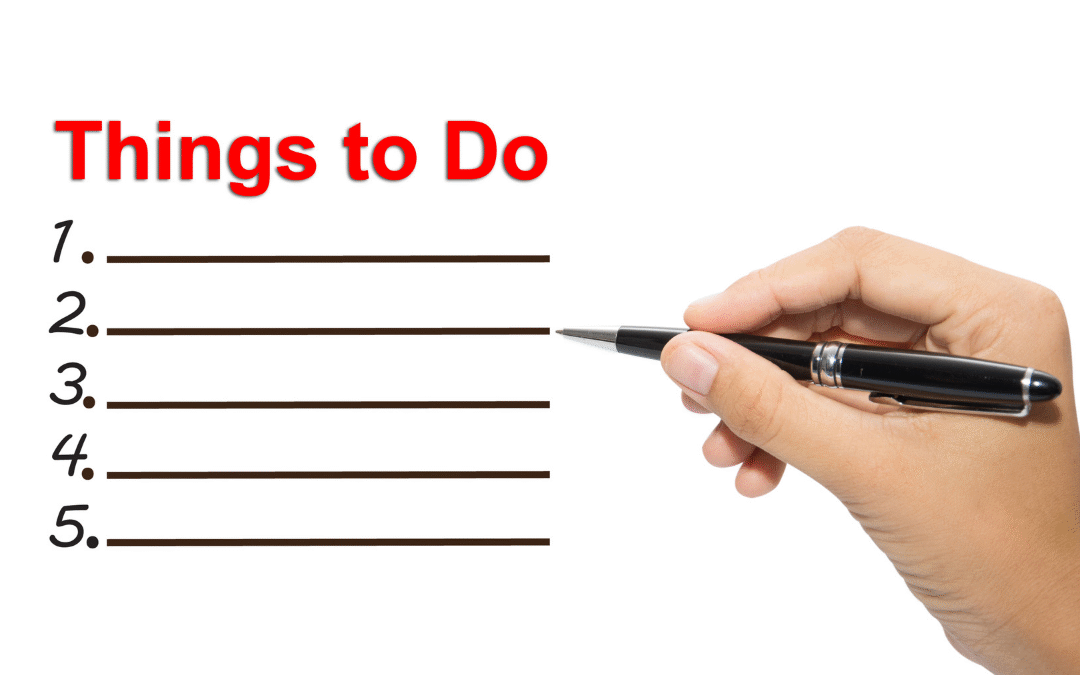There’s something incredibly rewarding about taking a rough draft and transforming it into a polished manuscript. I know firsthand that editing can feel daunting, but with the right approach, you can refine your work to make it shine like a professional’s. In this post, I’ll share some tips and techniques that I use to edit my own writing, helping you enhance clarity, coherence, and overall impact—so your manuscript stands out and captures readers’ attention!
Key Takeaways:
- Utilize a fresh perspective by taking a break before editing, allowing you to spot inconsistencies and areas for improvement more effectively.
- Focus on structure and flow first, ensuring that the narrative progresses logically and coherently, before stepping into grammar and punctuation.
- Read your manuscript aloud to catch awkward phrasing and improve the overall rhythm of your writing, making it more engaging for readers.
Cultivating the Editor’s Mindset
Developing an editor’s mindset transforms the way you engage with your manuscript. This shift allows you to step back and assess your work from a critical perspective, enabling you to identify weaknesses, inconsistencies, and areas that demand refinement. By embracing this duality of writer and editor, you create space for improvement and growth, ultimately leading to a polished piece that resonates with your audience.
Shifting from Writer to Editor
Transitioning from writer to editor involves a significant mindset shift. I often find that I need to embrace a different set of skills and perspectives. As a writer, I’m emotionally invested in my words, but as the editor, I must become a more detached observer who looks at my work with a discerning eye. This balance is vital in spotting flaws and opportunities for enhancement.
Embracing Objectivity and Distance
Achieving objectivity while editing requires a conscious effort to create distance from your work. Setting your manuscript aside for a few days, or even weeks, helps build this necessary separation. Upon returning, you’re likely to view the writing through fresher eyes, much like a reader encountering your text for the first time. This shift in perspective often reveals issues that went unnoticed during the initial drafting phase.
Building that emotional distance can be challenging, especially if you’ve poured your heart and soul into your manuscript. One method that works for me is to read the text aloud or to a friend. This approach often highlights awkward phrasing or areas needing clarification, providing insights that are harder to catch when I’m too close to the work. Using tools like printouts or changing the font can also provide a fresh lens. Engaging in these practices transforms the editing process into a constructive experience that enhances the overall quality of your writing.

The Art of Cutting: Less is More
The heart of effective editing often lies in the art of cutting. Embracing brevity not only sharpens your prose but enhances your narrative’s focus. It’s tempting to let words flow freely, but identifying the essence of your story and trimming away excess will elevate your writing. In this section, I’m venturing into how to recognize redundant content and streamline your narrative for a more impactful delivery.
Identifying Redundant Content
Spotting redundancy is key to tightening your manuscript. I often find myself revisiting passages to look for repeated ideas or phrases that don’t add value. Asking myself if every sentence serves a purpose helps to clarify my thoughts. If I see multiple sentences conveying the same point, I choose the strongest one and eliminate the rest, giving my writing more punch.
Streamlining Your Narrative
Streamlining your narrative involves refining your story to maintain momentum while eliminating distractions. I focus on ensuring each scene propels the plot or develops characters. Stray subplots or overly descriptive passages often bog down the flow, so I ask myself if each element drives the story forward. If not, it’s time to consider a trim or complete removal.
This process of streamlining can transform a sprawling manuscript into a cohesive and engaging read. When I analyze my narrative closely, I look for moments where I might have over-explained or gone off on tangents. For instance, if a character’s background is explored in lengthy detail, I condense that information into a few key lines that enhance the current scene without overwhelming the reader. I also assess dialogue and action—noting if they effectively serve the plot’s progression or if they merely fill space. Focused, purposeful writing resonates with readers, keeping them invested in the story until the very end.

Enhancing Clarity and Cohesion
Refining your manuscript’s clarity and cohesion elevates your writing, ensuring readers grasp your message effortlessly. By employing precise language and effective transitions, I create a seamless flow that binds my ideas together. Rereading passages out loud can reveal awkward phrases or disjointed sections. Simplifying complex sentences, and favoring active voice enhances understanding, while carefully arranging ideas into logical sequences provides a coherent narrative or argument. Making these adjustments leads to a polished, engaging manuscript that captures and retains reader interest.
Strengthening Your Argument Structure
The backbone of a compelling manuscript lies in its argument structure. I start by outlining my main points and ensuring each one logically supports my thesis. By identifying potential counterarguments or weaknesses, I address them head-on, which strengthens my claims. Each section should build upon the last, guiding readers through my thought process. Subdividing arguments into clear subsections can further clarify my stance and make my overall message more persuasive.
Ensuring Consistent Tone and Style
A consistent tone and style not only unify your manuscript but also reflect your unique voice as an author. I regularly revisit my manuscript to check for shifts in tone—whether it’s academic, conversational, or narrative—ensuring that every part aligns. Using a style guide can help in maintaining uniformity in aspects like punctuation, capitalization, and nomenclature. As I edit, I pay attention to word choice, avoiding overly casual language in formal sections. This attention to detail helps in creating an engaging and cohesive reading experience.
Delving deeper into tone, I strive to ensure that my voice remains authentic throughout my manuscript. To achieve this, I analyze my writing habits and develop a style that feels natural to me, helping to engage my readers effectively. I make a conscientious effort to choose language that resonates with my audience; for instance, using relatable metaphors or clear examples can bridge gaps in understanding. Sampling the works of authors I admire aids my tone consistency; I dissect their writing to see how they maintain voice across various themes. Regularly revisiting and revising my work allows me to fine-tune this cohesive stylistic thread that weaves through my manuscript, establishing a strong connection with my readers.
Polishing the Prose: Language and Rhythm
As I work to refine my manuscript, I pay close attention to the language and rhythm of each sentence. Polishing my prose involves more than correcting grammar—it’s about crafting a narrative that flows beautifully and keeps readers engaged. I examine word choice, sentence structure, and pacing to ensure that every phrase contributes to the overall tone and message of my work. Small adjustments can make a big difference, enhancing the reading experience and bringing my characters and ideas to life.
Crafting Powerful Sentences
Crafting powerful sentences is an art that I embrace during the editing process. A well-constructed sentence not only conveys meaning, but also evokes emotion and imagery. I aim for clarity and impact, often revising lengthy phrases into concise, punchy statements. The rhythm produced by varying sentence lengths keeps the narrative dynamic, making it more enjoyable for readers. By cutting unnecessary words and choosing evocative language, I breathe vitality into my writing.
The Importance of Active Voice
Active voice energizes my writing and fosters a stronger connection with the reader. This approach places the subject at the forefront, creating immediacy and clarity. For example, instead of saying “The ball was thrown by John,” I express it as “John threw the ball.” The latter resonates more effectively, driving the narrative forward with vigor. In my edits, I actively seek out passive constructions, transforming them into lively, engaging sentences that elevate the overall quality of my work.
Using active voice consistently not only clarifies the action but also heightens tension and emotion, drawing readers into the narrative. Studies show that active voice promotes faster comprehension, which is necessary for keeping readers immersed in the story. By utilizing straightforward constructions, I ensure the intent behind my words remains crystal clear, allowing the reader to focus on the plot or character development without unnecessary distraction. Active voice is a powerful tool in my editing arsenal, helping me articulate my thoughts with precision and vitality.
Techniques to Spot Errors Like a Hawk
The editing process is often where my manuscript transforms from good to great, and honing my skills to catch errors can make all the difference. One effective strategy I adopt involves focusing on the text’s visual layout; glaring mistakes often stand out more when I examine the manuscript in different formats, such as print versus digital. Additionally, reading the work aloud can uncover missed inconsistencies in tone and rhythm, helping me catch those sneaky errors that evade the eyes. Adopting a systematic approach ensures I don’t overlook anything vital.
Taking Breaks for Fresh Eyes
Stepping away from your manuscript can work wonders during the editing process. After an intense writing session, I find that allowing a day or two to pass gives my mind the respite it needs to return to the text with renewed clarity. This distance cultivates an opportunity for fresh perspectives, making it easier to spot discrepancies or awkward phrases. A break transforms editing from a mundane task into an engaging activity, sparking newfound enthusiasm for the project.
Utilizing Tools and Resources for Precision
Leveraging digital tools offers a significant advantage in catching errors quickly and accurately. Programs like Grammarly and ProWritingAid equipped with advanced algorithms will scan my manuscript for grammar, punctuation, and style issues. I often utilize the Hemingway app to assess sentence structure and readability, aiming to strike the right balance between sophisticated ideas and accessible language. These resources not only elevate my editing precision but also enhance my overall learning as a writer.
Many of these tools come with valuable features tailored for different types of writing. For instance, Grammarly’s premium version provides contextual spelling suggestions, style improvement tips, and even vocabulary enhancements tailored to my specific audience. By integrating these resources, I’m not only correcting errors but also developing a more polished voice. It’s like having a personal editor by my side, aiding me in avoiding common pitfalls and refining my narrative. Investing time in familiarizing myself with these tools ensures that they become a seamless part of my editing workflow.
Final Thoughts on the Editing Journey
Embrace the Process
Editing is not just a chore; it’s a transformative journey that breathes new life into your writing. As I revisit my manuscript, I find that each round of edits reveals fresh insights and perspectives. Some passages, once deemed perfect, now feel clunky or out of place. This evolution is a natural part of the process, akin to sculpting a rough block of marble into a stunning statue. The key is to embrace the frustration and exhilaration that come with the drafting and editing phases, both are crucial in shaping your narrative.
Set Aside Time for Reflection
Taking breaks between revisions has allowed me to return with a clearer mind. During these pauses, I often jot down new ideas or solutions to tricky sections. Data shows that 40% of writers who step away from their manuscripts report enhanced creativity and clarity upon returning. Finding that balance between active editing and passive reflection strengthens my work and hones my voice. Returning with fresh eyes has repeatedly uncovered opportunities for enhancement, leading to greater clarity and deeper emotional resonance in my storytelling.
Trust Your Instincts
Ultimately, trusting my instincts shapes the direction of my manuscript. I often consult beta readers, who broaden my perspective, yet my voice must shine through. Their feedback serves as a guide, but I remain anchored to my vision and story’s essence. It’s this personal touch that will resonate with readers. Each edit, each revision, brings me closer to the manuscript that feels authentically me. Staying true to my unique voice while refining my narrative ensures that the final product is one I’m proud to share.
Q: What are the first steps I should take to begin editing my manuscript?
A: Begin by setting your manuscript aside for a few days to gain fresh perspective. Once you revisit it, read through the entire document without making any changes to understand the overall flow and identify significant issues. After this initial read, create a checklist of the components you want to focus on, such as plot consistency, character development, and pacing. This approach will provide you with a clearer framework for your editing process.
Q: How can I improve the clarity and readability of my writing during the editing process?
A: To enhance clarity and readability, focus on simplifying complex sentences and removing unnecessary jargon. Use active voice wherever possible, as it typically makes sentences more direct and engaging. Additionally, consider varying sentence lengths to create a more dynamic rhythm. Incorporate feedback from beta readers or critique partners, as they can offer insights into parts of the text that may be confusing or unclear to others.
Q: Are there specific tools or resources I can use to assist with my manuscript editing?
A: Yes, there are several tools and resources available that can aid in the editing process. Software like Grammarly and ProWritingAid can help identify grammatical errors and stylistic issues. Additionally, reading your manuscript out loud can help catch awkward phrasing and errors that may not be apparent when reading silently. For more comprehensive feedback, consider hiring a professional editor or joining a writing group where you can exchange critiques with fellow writers.








